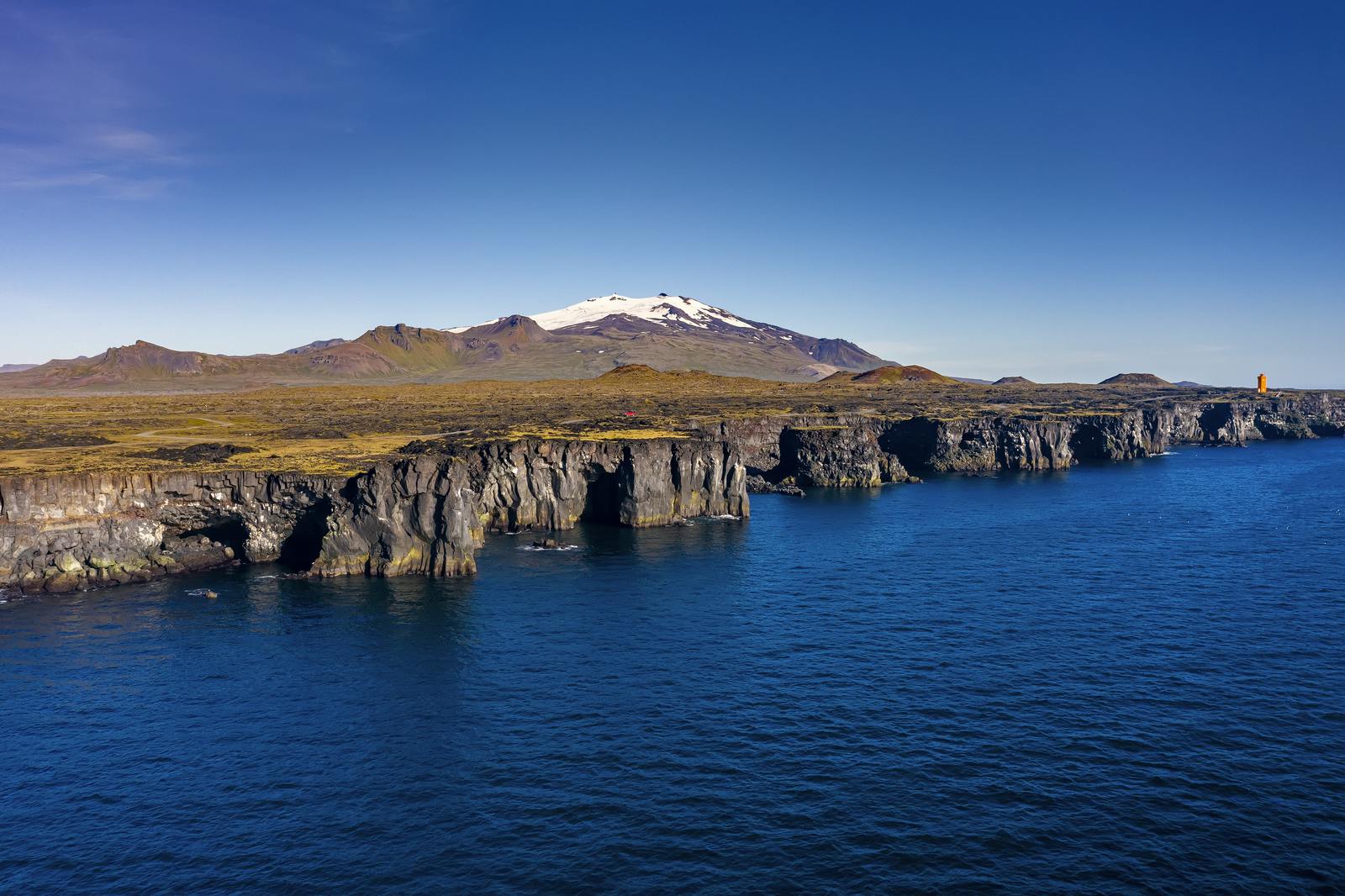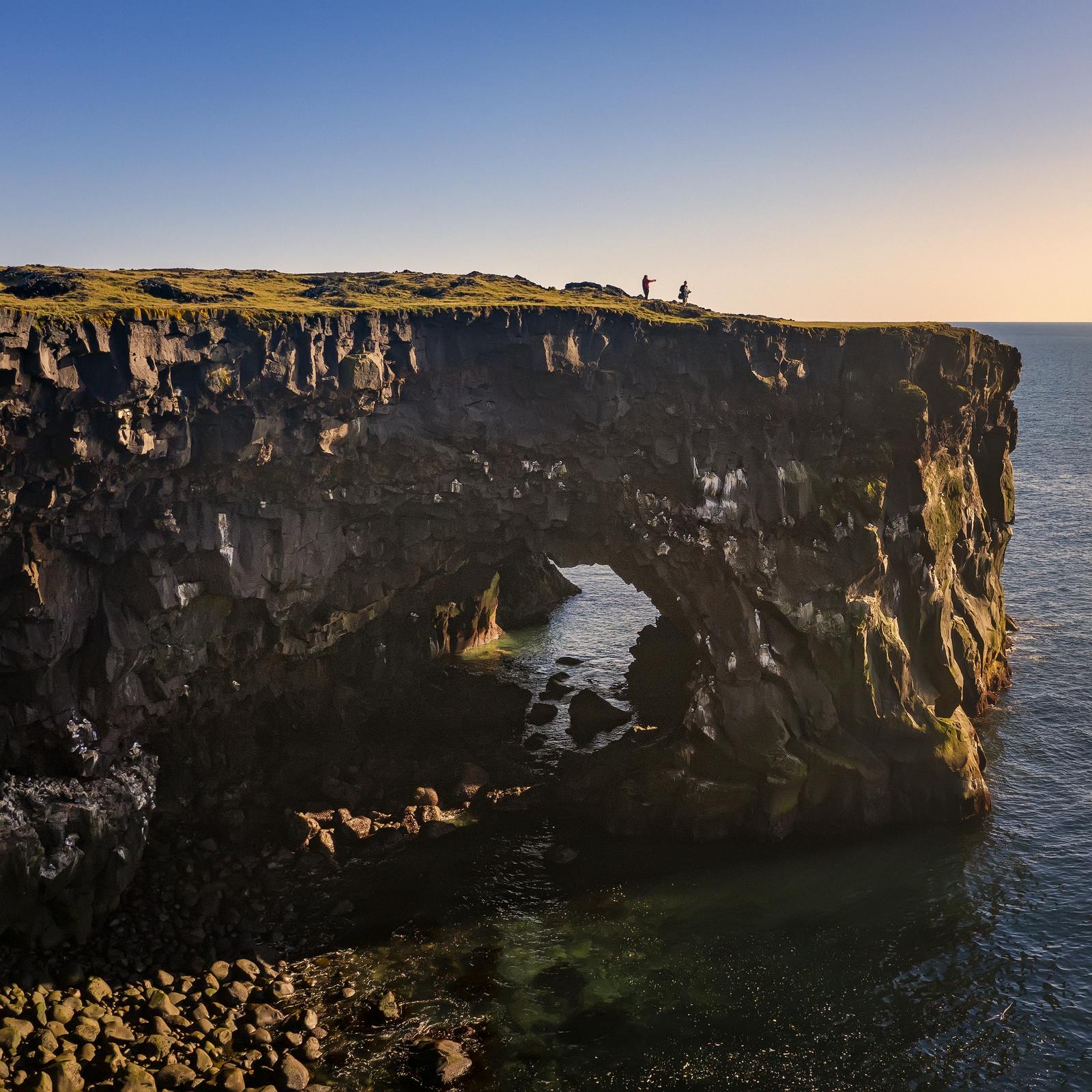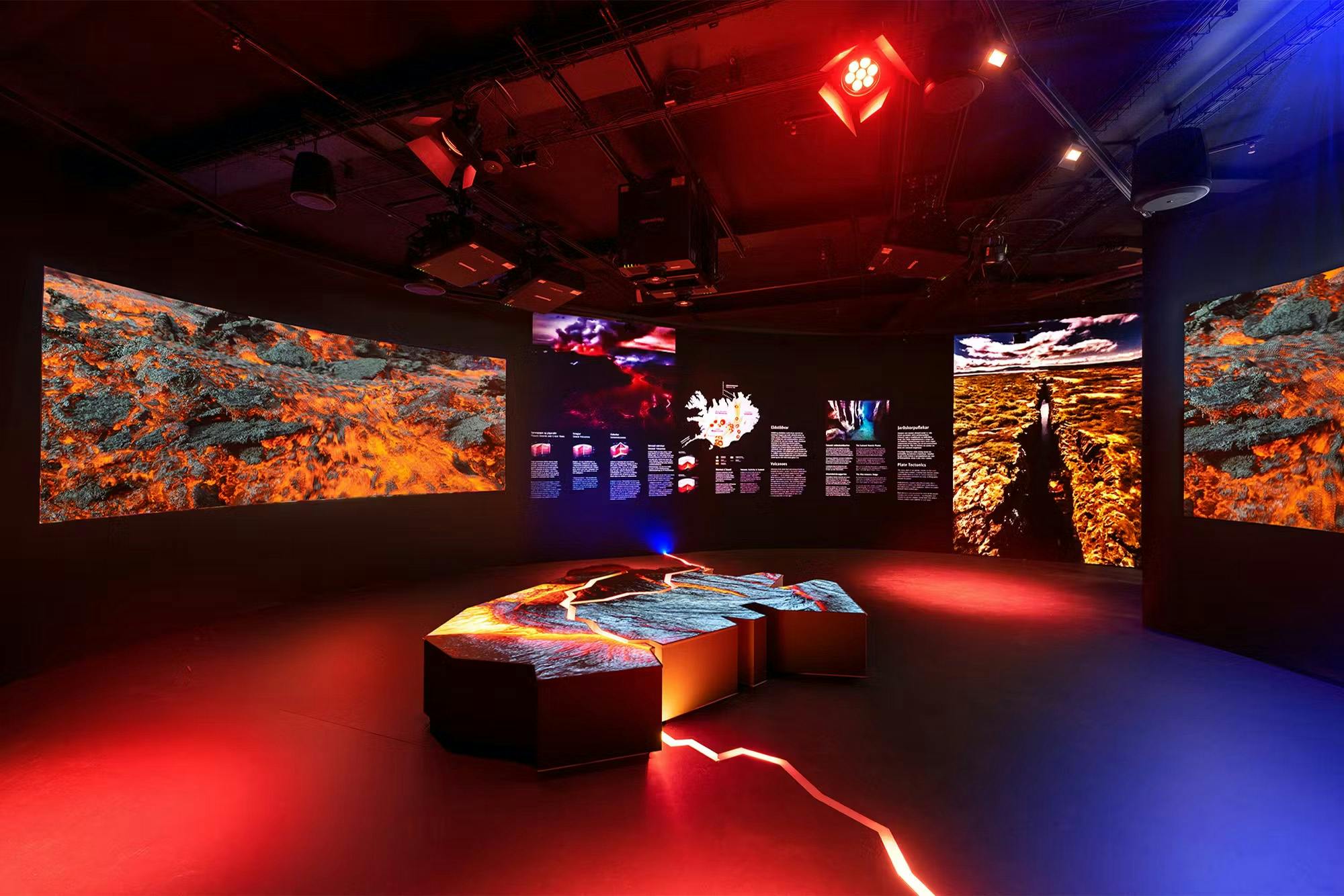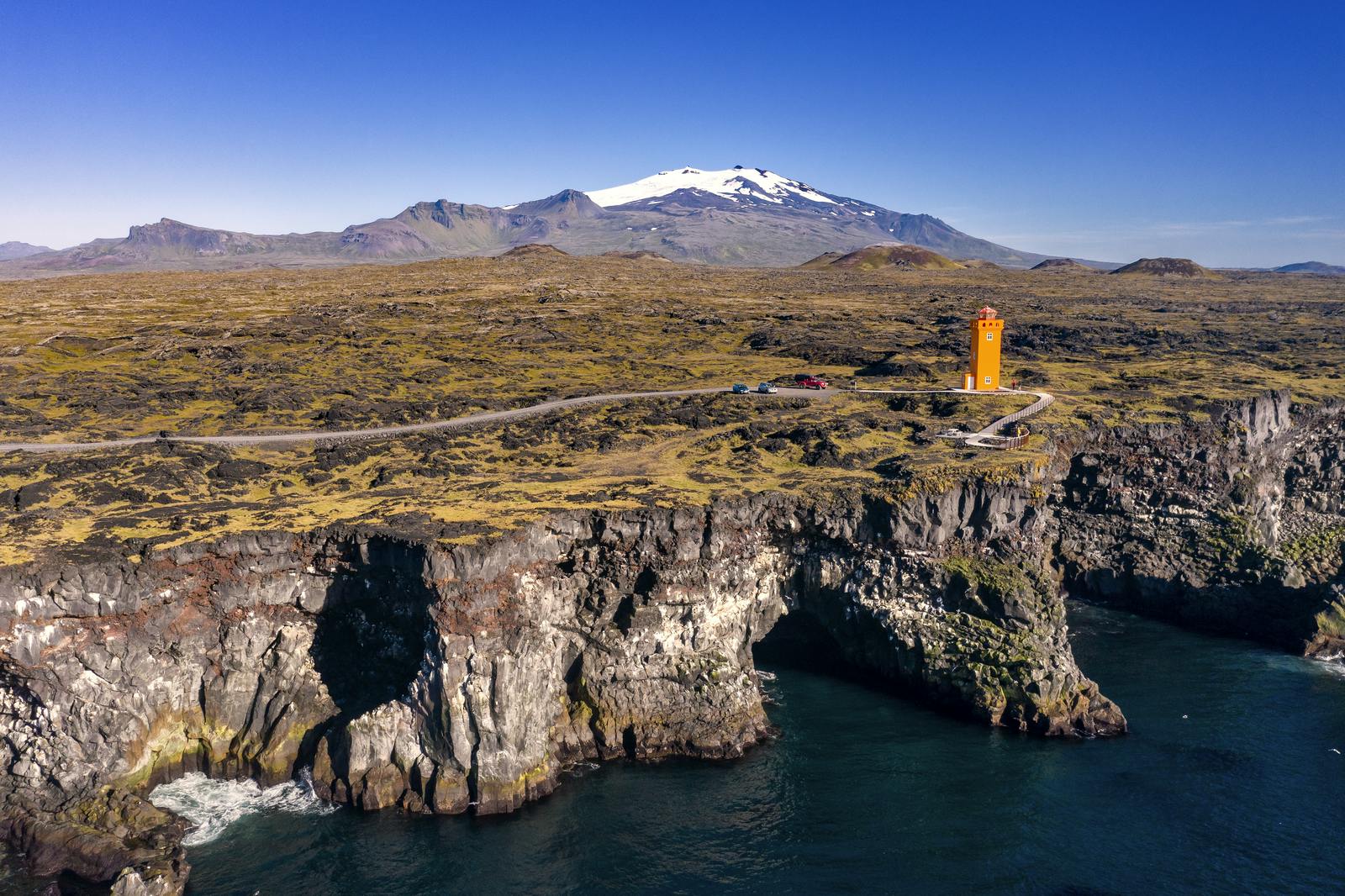
Gerðuberg Cliffs
Even in a country renowned for its staggering natural beauty, the Gerðuberg Cliffs are a sight to behold. Located on the southern side of Iceland’s Snæfellsnes Peninsula, this geological marvel greets travellers to this stunning region.
Basalt column stacks line up in perfect symmetry along the cliff, rising like a giant’s fortress in a fairy tale. The colossal hexagonal pillars stand between 7 and 14 metres (23 to 46 feet) high. This dark-rock wall extends for about half a kilometre, a monumental structure that earns its Icelandic name, translating to “fortified wall.”
How to Get to the Gerðuberg Basalt Cliffs
The Gerðuberg basalt columns are often among the first attractions travellers encounter in the Snæfellsnes Peninsula when driving from Reykjavik. The journey from the capital typically takes about 90 minutes to two hours, depending on the route and road.
Drive north on the Ring Road (Route 1), then continue on Route 54 towards Snæfellsnes Peninsula. The cliffs are located just off Highway 54 on the southern side of the peninsula. Keep an eye out for a sign pointing to the last stretch of dirt road leading to Gerðuberg.
As a natural geological attraction, it’s accessible at all times, and no admission fees are required. From the small, designated parking lot, it’s only a short stroll on the old walking path to the base of the Gerðuberg cliffs.

What Are Basalt Cliffs & How Do They Form?
When visiting Gerðuberg cliffs, it’s easy to get lost in their magic. The row of perfectly shaped hexagonal basalt columns is lined up in precise symmetry, like an army of stone giants standing side by side. But what exactly is the science behind this magnificent geological structure?
Some hundred thousand years ago, a volcanic eruption spewed rivers of molten basalt lava that ran and spilt over the area. At the end of the eruption, the lava stopped flowing and cooled slowly and solidified. As the solidified lava cooled and contracted, it started to break up and form a pattern of vertical hexagonal fractures, a phenomenon known as columnar jointing. The uniform flow and slow, even cooling resulted in the symmetrical hexagonal pillars that almost look man-made.
Learn more about the geological processes that shaped Iceland into the land of ice and fire at Reykjavik’s Perlan Museum. Its Forces of Nature exhibition uses videos and interactive displays to explain the science behind Iceland’s volcanoes, earthquakes, and glaciers. This is the perfect opportunity to gain a greater understanding and appreciation for this wild, wonderful country.

Exploring the Gerðuberg Cliffs
Although the final approach to the cliffs is via a short turn-off from the highway, it’s set back from sight. The moment the Gerðuberg basalt columns fully rise from the landscape can be a jaw-dropping experience for first-timers.
The sheer scale of the colossal Gerðuberg is immediately impressive, especially beneath the massive shade of the pillars. Mighty and imposing, hundreds of towering basalt columns stretch for approximately 500 meters. Scattered boulders lie at the wall’s foot, making it appear even more like the building blocks of trolls and giants.
A stroll along the path at the base of the cliffs allows travellers to soak in this extraordinary geological formation. From the foot of these enormous pillars, the sweeping landscapes of Snæfellsnes extend beautifully to the horizon.
Adventurous visitors with extra time can hike to the top of the Gerðuberg cliffs for a spectacular view. The short but exciting ascent rewards climbers with a bird’s-eye perspective of the symmetrical columns, rugged terrain, and distant glacial mountains.

Things to Do Near the Gerðuberg Basalt Cliffs
Gerðuberg is a beautiful destination, and it is only the beginning of the natural wonders Snæfellsnes has to offer. After all, it’s called “Iceland in miniature” for good reason. A road trip around the peninsula uncovers geological marvels and picturesque fishing villages, some just minutes from the Gerðuberg cliffs.
In the southern side of Snæfellsnes, close to the cliffs, lie a number of key attractions.
- Ytri Tunga Beach: One of the best places in Iceland to spot seals sunbathing on the rocks.
- Búðakirkja (The Black Church of Búðir): A small, solitary black church that’s especially striking against the backdrop of rugged lava fields
- Arnarstapi and Hellnar: Two old fishing villages linked by a stunning coastal walking path
- Rauðfeldsgjá Gorge: A deep, dramatic ravine cutting into the side of a mountain that can be accessed via a short but adventurous hike
One of the places that’s not to be missed in the Snæfellsnes Peninsula is undoubtedly the Snæfellsjökull National Park. The crown jewel of the region, it’s home to plenty of famous Icelandic sites.
- Lóndrangar: Two towering basalt rock pillars standing majestically off the coast
- Djúpalónssandur Black Sand Beach: A beautiful black pebble beach featuring eye-catching rock formations, legendary lifting stones, and an old shipwreck
- Vatnshellir Cave: An 8,000-year-old lava tube that travellers can descend via a spiral staircase to explore a subterranean world
- Snæfellsjökull: Dominating the centre of the park is the Snæfellsjökull glacier, a dazzling ice cap covering the top crater of a volcano. On clear days, the glacier’s peak can be seen all the way from Reykjavik
If the spectacular ice cap inspires you, continue your exploration of Iceland’s frozen forces at Perlan’s Ice Cave & Glacier Exhibit.

Best Time to Visit Gerðuberg
Each season offers a unique opportunity to discover the Gerðuberg basalt cliffs. Summers are perfect for comfortable sightseeing and long daylight hours for photography. On the other hand, winters add a touch of magic to the landscape, snow-dusted basalt columns and icy formations. Regardless of the season, wearing appropriate footwear is a must to navigate the rugged terrain comfortably.
Gerðuberg FAQs
What makes the Gerðuberg cliffs unique?
The Gerðuberg cliffs are notable for the exceptional geometric symmetry of their basalt columns. The cliffs are an excellent example of columnar jointing.
How long to spend at the Gerðuberg basalt cliffs?
Most visitors spend about 30 minutes to an hour at the cliffs.
Can you climb the cliffs?
It is possible to hike to the top of the cliffs, but it’s recommended to walk along the designated paths at the base for the best views.
Are there any facilities at the site, such as restrooms or food?
No, the Gerðuberg cliffs are a natural, undeveloped attraction with no visitor facilities.
What is the best time of year to visit the Gerðuberg cliffs?
The cliffs are beautiful year-round, but the summer months (June to August) offer the mildest weather and longest daylight hours.







